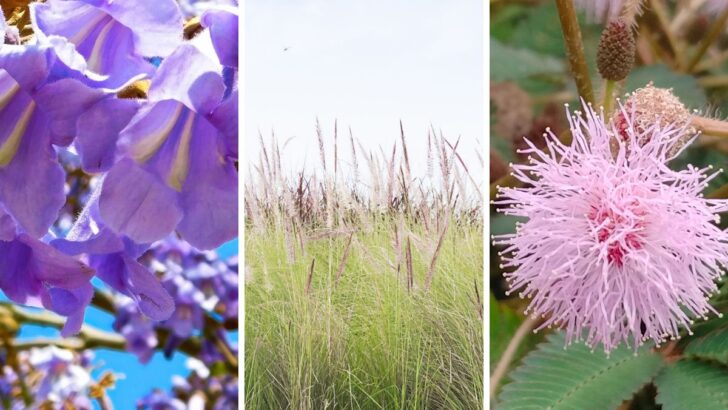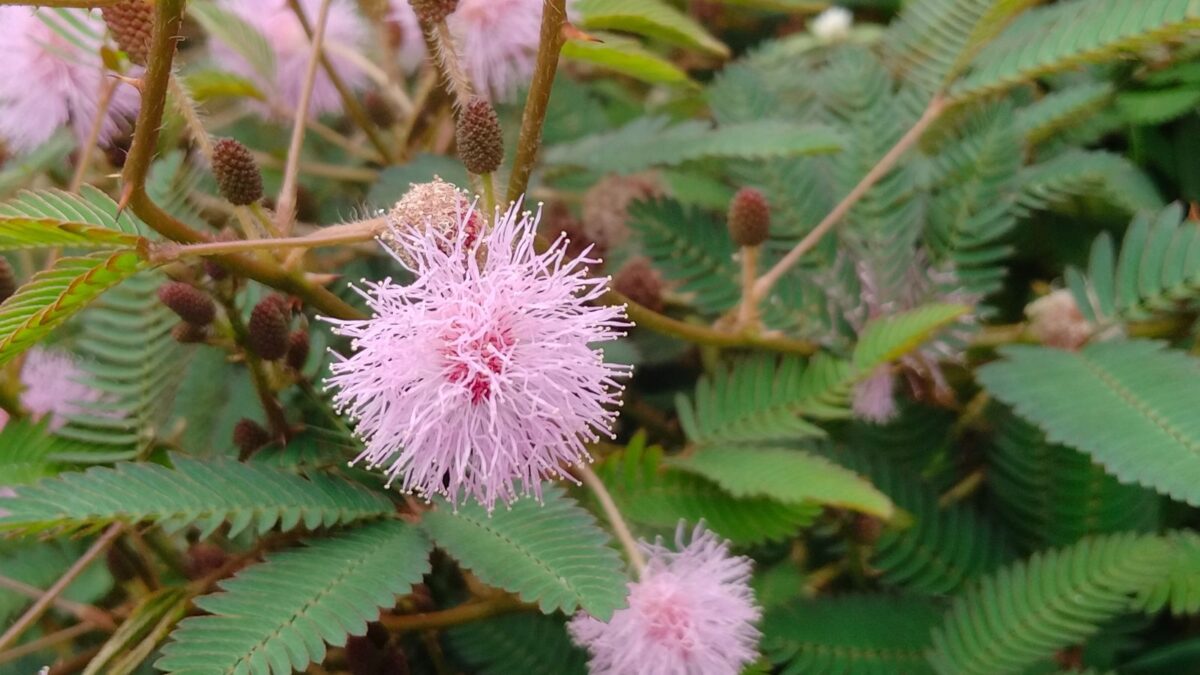Tennessee is home to a wealth of beautiful native trees, shrubs, vines, and other plants. Unfortunately, though, these native species are threatened by the encroachment of aggressive, fast-growing weeds. These invasive plants in Tennessee cause havoc not only on native ecosystems but also on the economy, by impacting everything from agriculture to outdoor recreation.
As gardeners, we can help fight this problem by learning to identify invasive plants so that we can take steps to properly remove them when we notice them in our home landscapes. And then, we can plant stunning native specimens in their place.
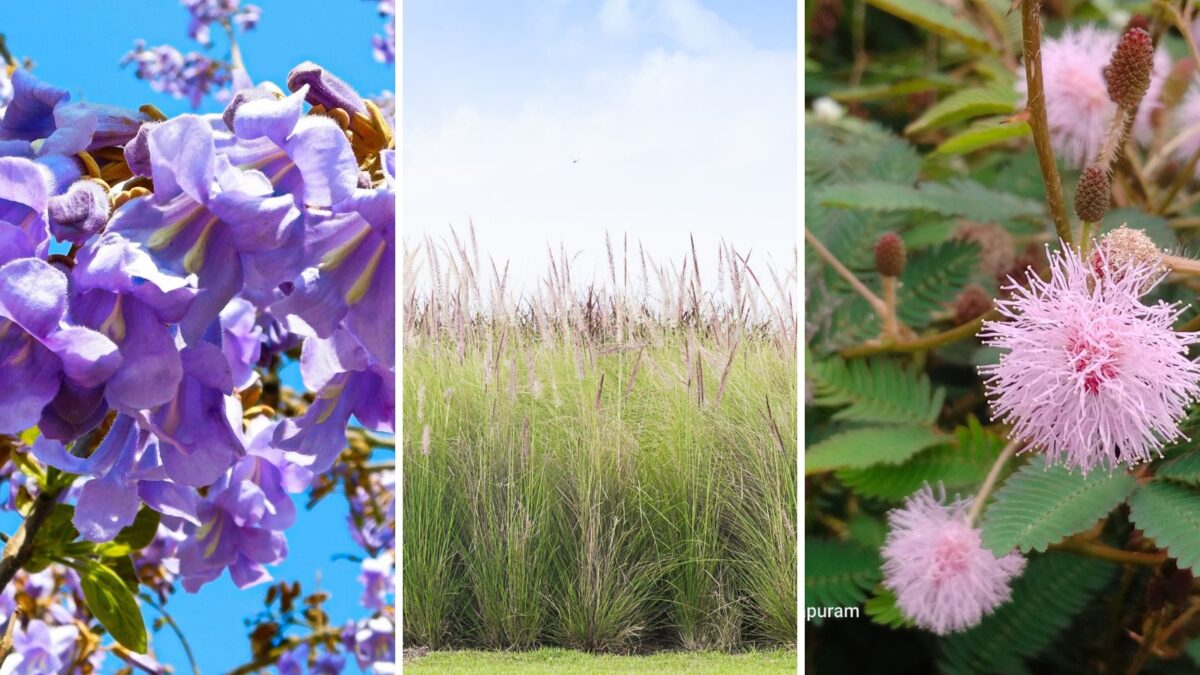
Invasive Plants in Tennessee
The following invasive plants are commonly found in yards, gardens, and even nurseries. Contact your local Extension office for information on how to effectively remove any you find on your property, and kindly ask plant sellers to stop offering invasive species if you see any in their inventory.
1. Mimosa (Albizia julibrissin)
Also commonly called silk tree, mimosa produces showy pink blossoms with long, silky stamens that give a tufted appearance. They bloom late spring through summer and have a sweet fragrance. This fast-growing deciduous tree reaches 20 to 40 feet in height and has feathery, bipinnately compound leaves. The flat, leguminous seed pods appear in late summer and ripen from light green to brown, then split to release five to 10 seeds each.
Native rose-acacia locust (Robinia hispida) also has compound leaves and showy pink flowers, and fringetree (Chionanthus virginicus) produces masses of beautiful white, fringe-like flowers.
2. Tree of Heaven (Alianthus altissima)
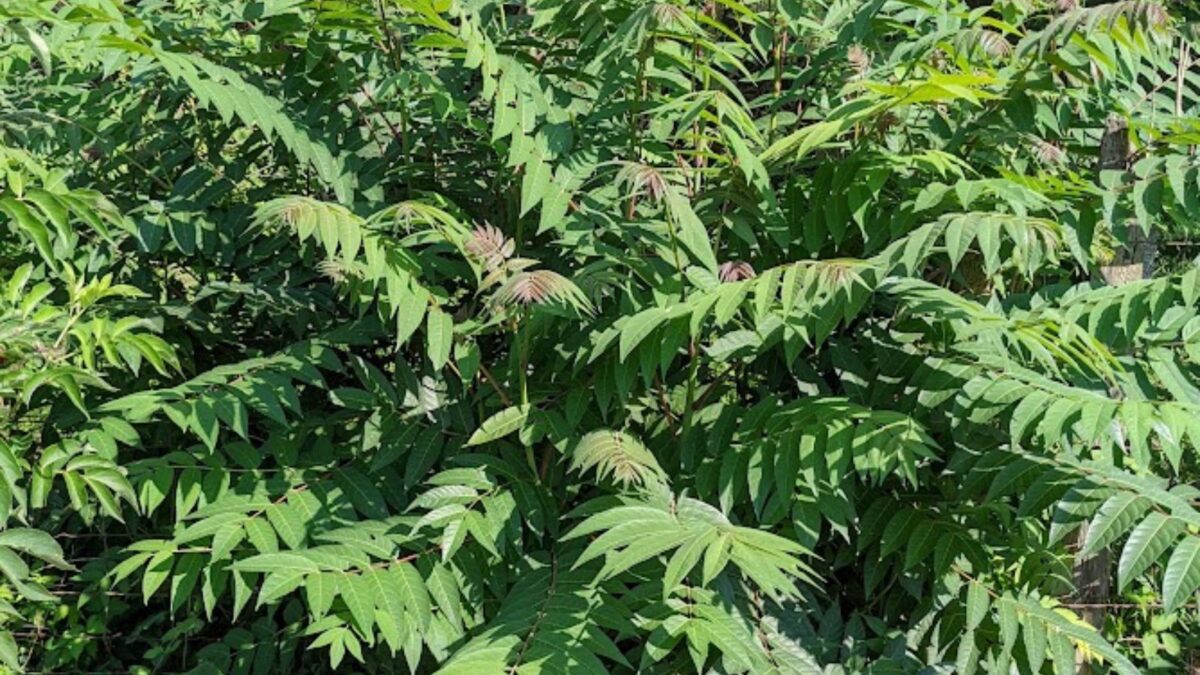
Tree of heaven is a weedy deciduous tree that grows quickly to reach heights of 80 feet or more. It has pinnately compound leaves with asymmetric, lanceolate leaflets. All parts of the tree give off a pungent odor when crushed or marred. Large, yellowish-green panicles of flowers bloom in late spring, followed by dense clusters of pink to tan winged seeds. Check out this quick guide to removing tree of heaven from your yard.
Native sumacs (Rhus spp.) have a very similar appearance and growth habit, and black locust (Robinia pseudoacacia) would also make a nice alternative.
3. Princess Tree (Paulownia tomentosa)
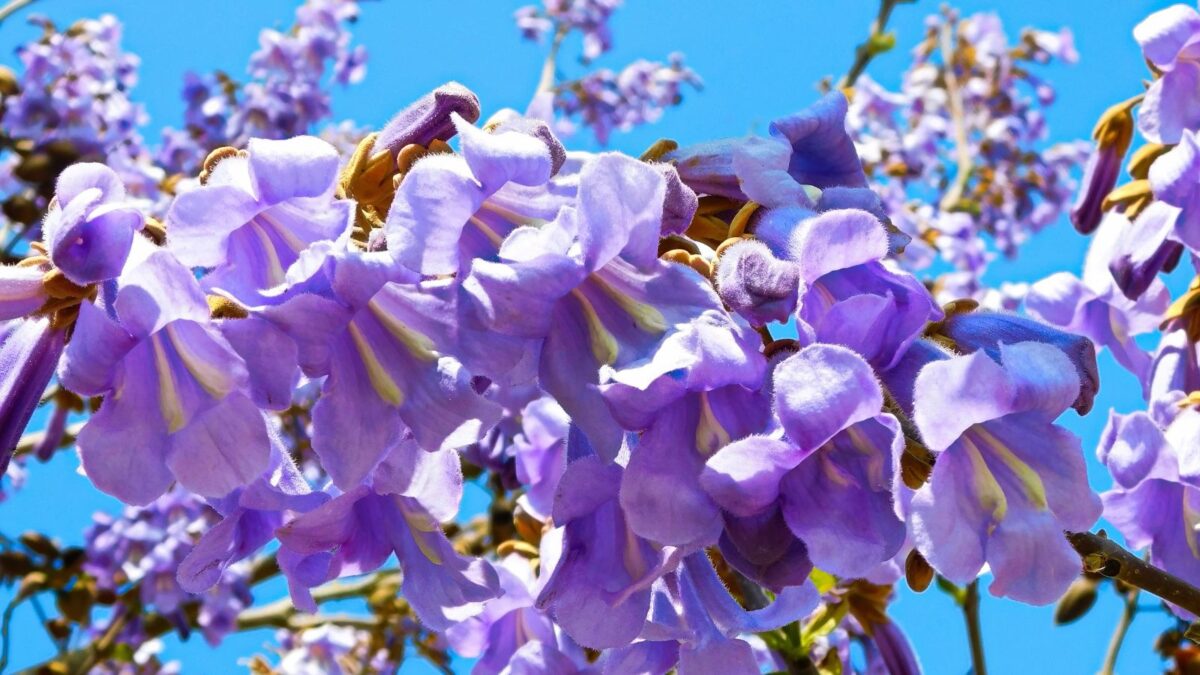
Princess tree grows 30 to 60 feet tall with very large, heart-shaped leaves. Its brittle twigs flatten at the nodes and have prominent pale lenticels. In spring, fragrant, showy, bell-shaped, pale violet flowers bloom in upright clusters. These terminal flower clusters give way to woody, beaked, pecan-shaped seed capsules that split in autumn to release thousands of tiny winged seeds.
Similar native trees include red buckeye (Aesculus pavia), with its upright clusters of showy red flowers, and northern catalpa (Catalpa speciosa), with its large leaves and tubular flowers.
4. Privet (Ligustrum vulgare, L. sinense)

Privet is a thicket-forming semi-evergreen to evergreen shrub originally introduced to the US as an ornamental. It has glossy, leathery, ovate to elliptic leaves and smooth, pale tan to gray bark. In June, tiny, white, fragrant flowers bloom in showy panicles, followed by berrylike fruits that ripen to blue-black in early fall and persist into winter.
Native evergreen flowering shrubs with dark blue or black fruits include devilwood (Osmanthus americanus) and possumhaw viburnum (Viburnum nudum).
5. Autumn Olive (Elaeagnus umbellata)

A large, fast-growing deciduous shrub, autumn olive grows up to 20 feet high. It has alternate, elliptic, dark green leaves with silvery undersides on often spiny twigs. Its fragrant, pale yellow flowers bloom in late spring and give way to round, berry-like drupes that ripen to red with brown or silvery speckles in September or October.
Good alternatives include native St. John’s-worts (Hypericum frondosum, H. prolificum) and spicebush (Lindera benzoin).
6. Multiflora Rose (Rosa multiflora)
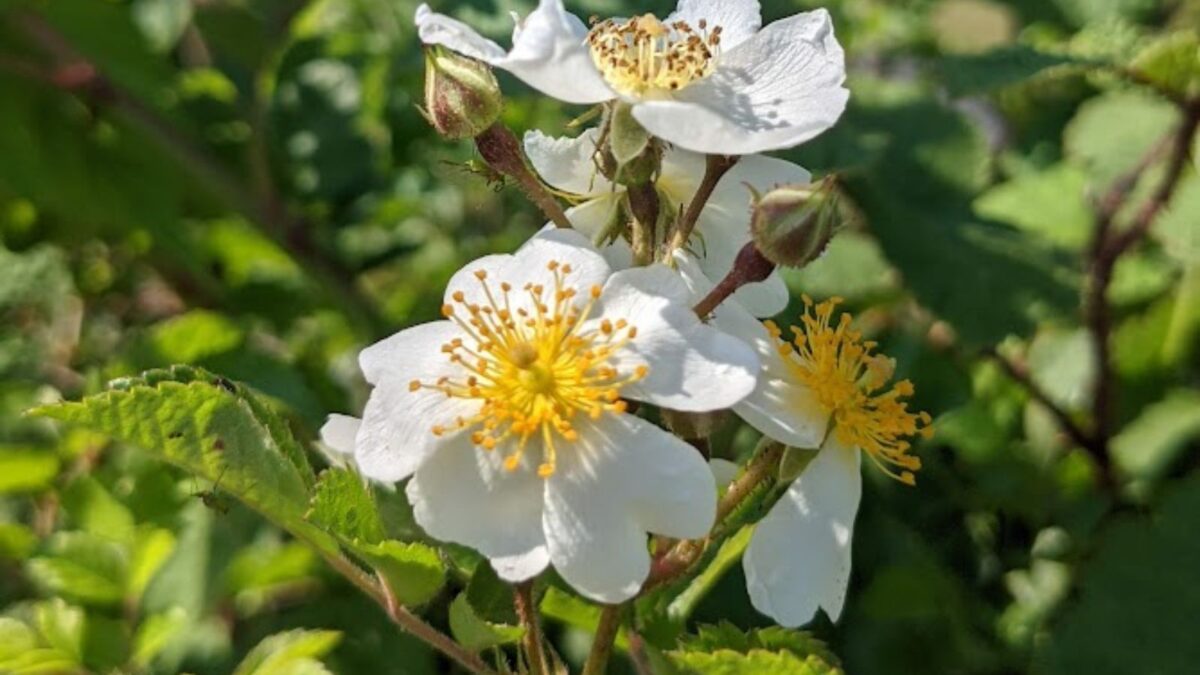
Multiflora rose is a clump-forming shrub that reaches about 13 feet tall, with arching branches that root if they touch the ground. The pinnately compound leaves have seven or nine elliptic to obovate leaves with sharply serrated margins. Look for clasping petioles with pale, fringed stipules. Small white to pale pink flowers bloom in clusters from May to July, followed by glossy red rose hips no more than 0.4 inches long.
Several rose species are native to Tennessee, including Carolina rose (R. carolina) and prairie rose (R. setigera).
7. Japanese Honeysuckle (Lonicera japonica)
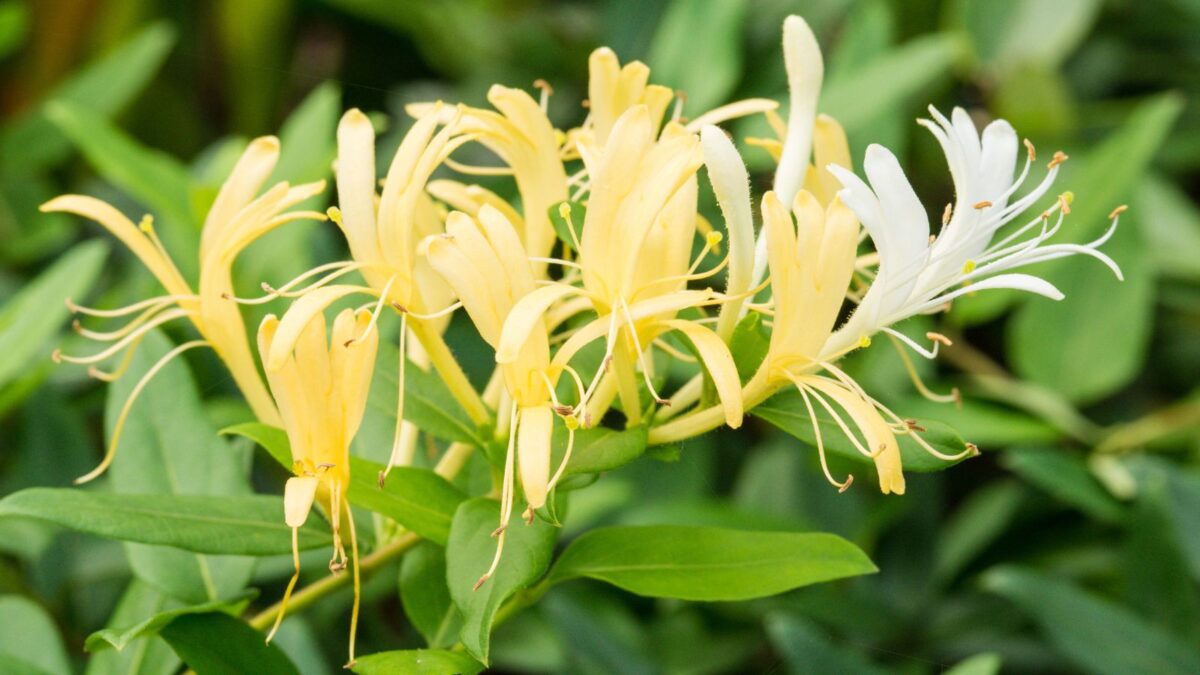
A semi-evergreen to evergreen vine, Japanese honeysuckle can climb or sprawl as long as 80 feet. Its hairy stems form tan, fissured bark with maturity and can root at nodes. It has opposite, elliptic leaves with rounded bases and bluntly pointed tips, smooth margins, and smooth to hairy surfaces. The fragrant, tubular flowers bloom in pairs April to August, and may be white, pink, or yellow. Glossy green berries begin appearing in June and ripen to black.
The native yellow honeysuckle (L. flava) also has yellow flowers, while trumpet honeysuckle (L. sempervirens) produces striking red blooms.
8. Asian Bittersweet (Celastrus orbiculatus)
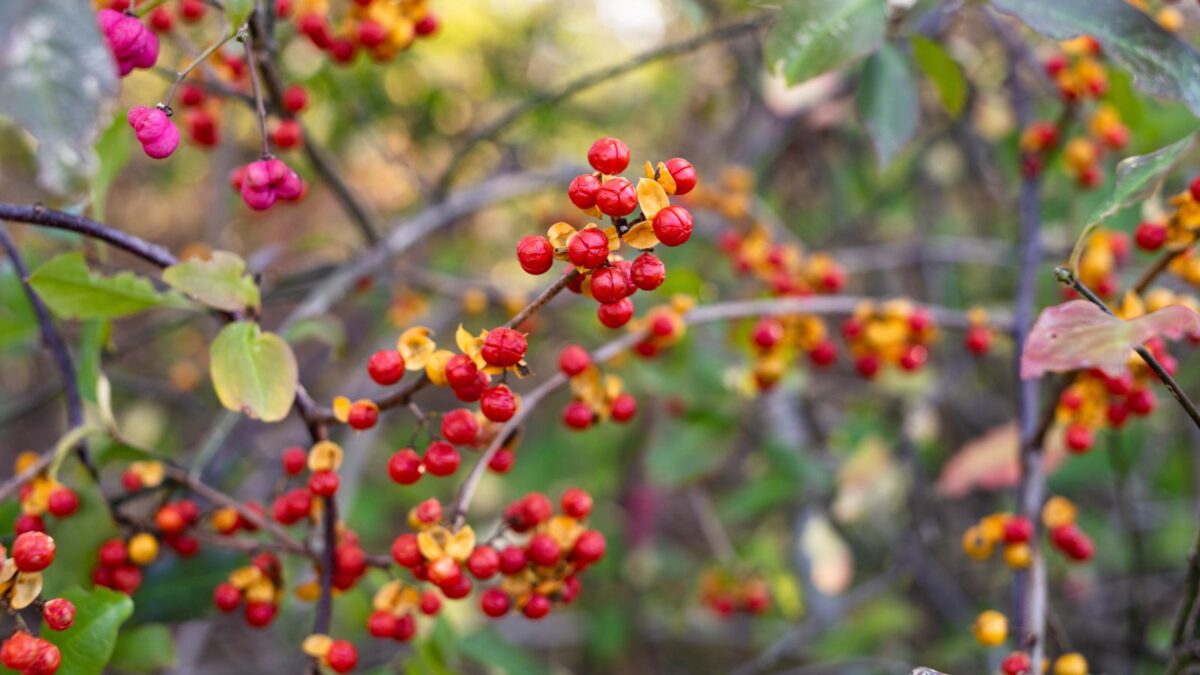
A deciduous vine, Asian bittersweet is perhaps best known for its bright yellow fruit capsules, which split open to reveal scarlet, three-sectioned fruits in late summer and often persist into winter. The leaves range from one to five inches long and from oblong to nearly circular, with bluntly toothed margins and tapering bases. Greenish-yellow flowers bloom in leaf axils in May.
Plant American bittersweet (C. scandens) instead, or choose another native vine, like Carolina snailseed (Cocculus carolinus).
9. Japanese Bloodgrass (Imperata cylindrica)
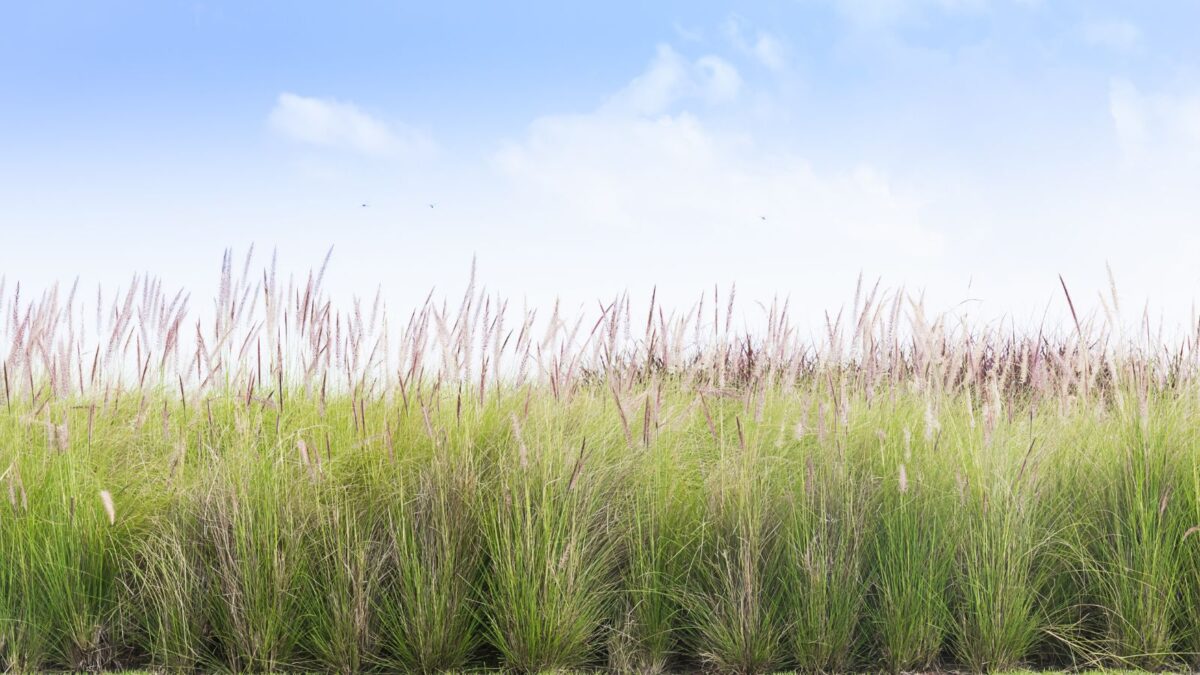
Cogongrass, or Japanese bloodgrass, is a dense, colony-forming perennial reaching one to five feet tall. Its stems grow from white, branching, sharp-tipped rhizomes but are hidden by the overlapping leaf sheaths, as the leaves mostly grow from the base of the plant. Typically yellow-green, the leaf blades have an off-center white midvein and rough edges. Long, silky, spike-like panicles emerge in spring.
Alternative native grasses include red switchgrass (Panicum virgatum), with its showy red fall foliage, and sideoats grama (Bouteloua curtipendula), which has dangling red inflorescences.
10. Purple Loosestrife (Lythrum salicaria)
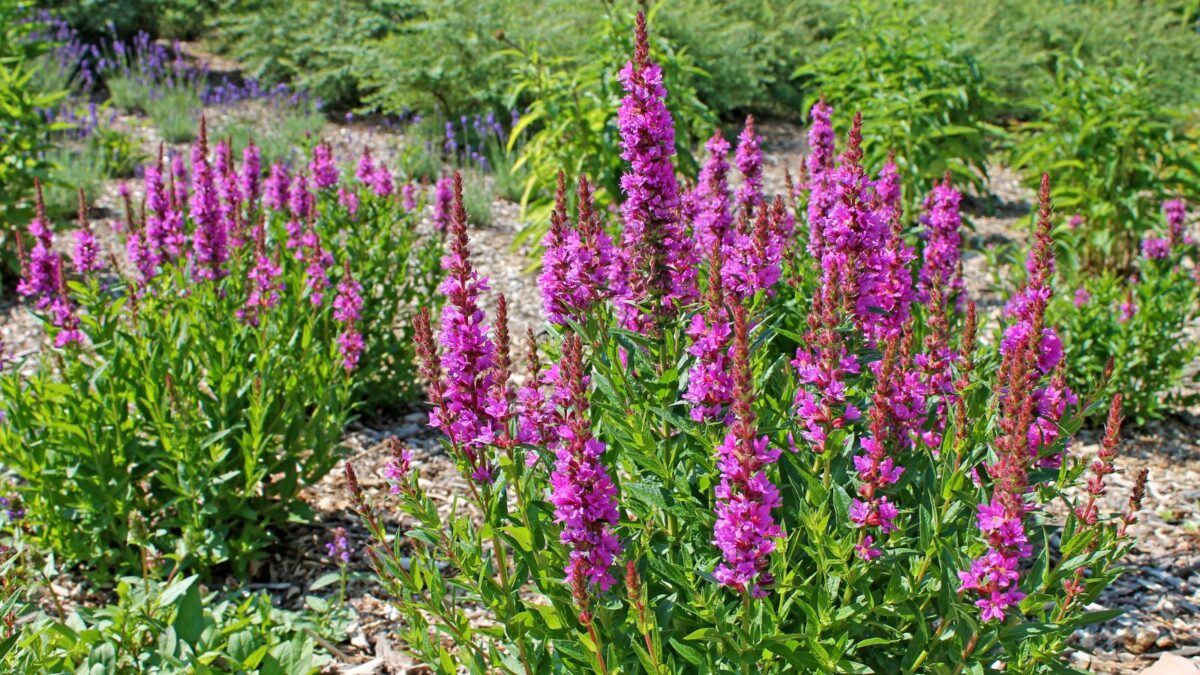
Purple loosestrife, an herbaceous perennial, averages five feet tall with a broad crown formed from many shoots. Throughout the summer, its showy pinkish-purple flowers bloom in long terminal spikes. The lanceolate leaves lack petioles and grow opposite each other or in whorls of three on the hairy, square stems.
Blazing star (Liatris spicata) makes an excellent alternative with its showy purple flower spikes, as does obedient plant (Physostegia virginiana).
11. Japanese Knotweed (Reynoutria japonica)
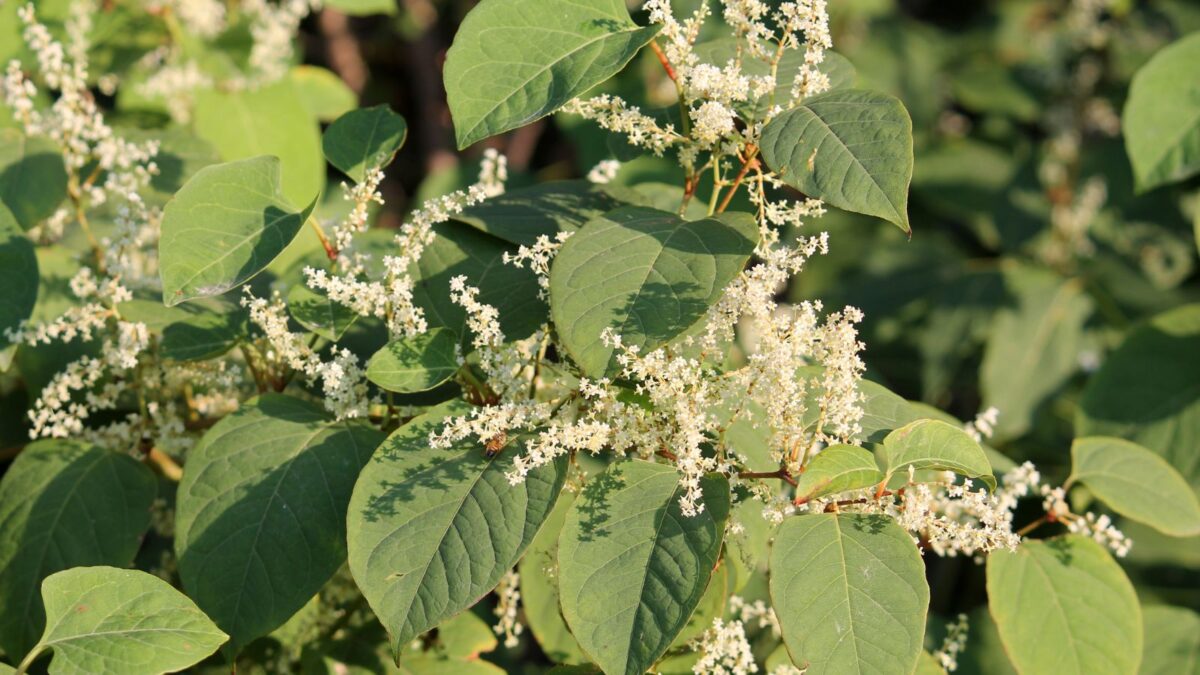
A semiwoody, bushy perennial, Japanese knotweed forms dense thickets three to 10 feet tall. Its erect, hollow stems with swollen nodes give it a bamboo-like appearance, though it has broad, oval to triangular leaves with pointed tips and reddish veins. In late summer, tiny, greenish-white flowers bloom in upright panicles in leaf axils. The papery, white, three-winged fruits that follow ripen to tan.
Similar native plants include white snakeroot (Ageratina altissima) and summersweet (Clethra alnifolia).
Once you know how to identify some of the most common and problematic invasive plants in Tennessee, you might start seeing them everywhere! Removing these weeds from your own landscape can feel extremely satisfying. And when you replace an invasive with a native plant, you not only remove a problem but take positive action too!
Plant Some TN Natives Instead
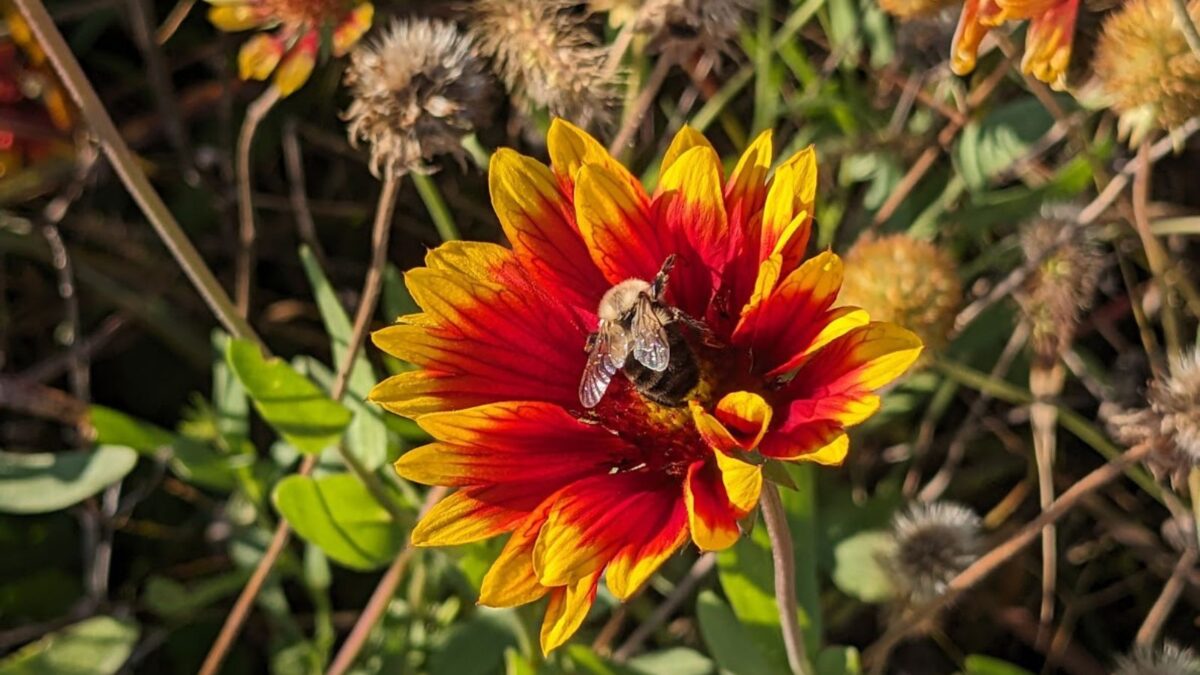
Tennessee has many beautiful native plants that work great for your home garden or landscape. Here’s a list of Tennessee native plants to give you some ideas for an easy to maintain garden.

